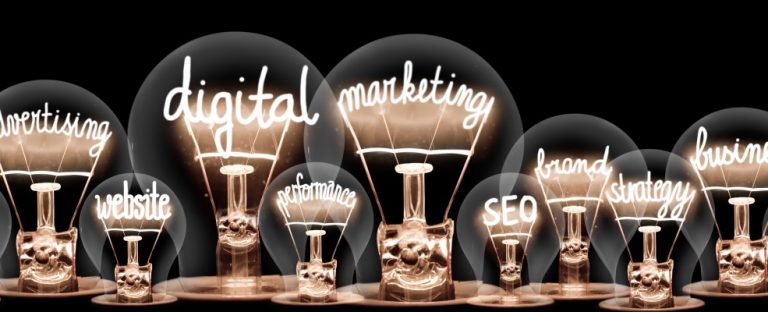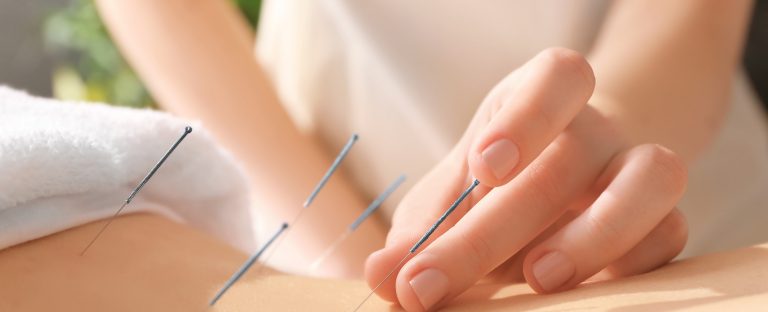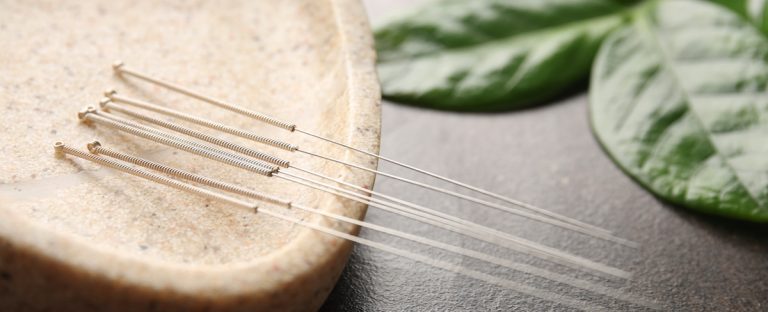Most kids, as well as a lot of adults, are afraid of needles. So the pairing of acupuncture and kids might not be an obvious one. However, as more and more parents are seeking alternative methods of treatment for their children, it might be a good next step for your holistic practice to incorporate pediatric acupuncture into its services! This specialty can be incredibly rewarding work, but there are some practical steps to consider first.
What is Pediatric Acupuncture?
 Parents are turning to acupuncture because it provides a safe resolution of illness, while also preventing future illnesses. Acupuncture and acupressure stimulate the body’s ability to restore and heal itself. Pediatric acupuncture can be the right tool that not only stimulates the immune system, but also relaxes the nervous system and regulates the digestive and hormonal systems.
Parents are turning to acupuncture because it provides a safe resolution of illness, while also preventing future illnesses. Acupuncture and acupressure stimulate the body’s ability to restore and heal itself. Pediatric acupuncture can be the right tool that not only stimulates the immune system, but also relaxes the nervous system and regulates the digestive and hormonal systems.
How Does Pediatric Acupuncture Compare to Traditional Acupuncture Treatment?
Pediatric acupuncture is commonly known as shonishin and it rarely uses needles. Instead, this form of acupuncture utilizes the practitioners’ hands and rounded tools to stimulate the acupoints of the child. The practitioner will gently and rhythmically rub, tap and press the skin to produce gentle stimulation sensations.
How to Specialize in Pediatric Acupuncture
It’s important to know the ins and outs of working with babies, kids, and teens. As with most things in life, it takes practice, practice, practice! The more kids you see the easier it will become to work with them.
Presuming you or your acupuncture specialist already have a solid foundation in theory and diagnosis, there are some critical differences in pediatrics that you need to know. For example, knowing the most common organs that are deficient in children or how to tap into the developing meridian system.
You’ll want to review the most common conditions you’ll treat children for, as this will help inform your treatment plan:
- Allergies
- Asthma
- Eczema
- Chronic Low Immunity
- Digestive Problems
- Acute Conditions: fever, cough, ear infections, colds
Nutrition is at the core of pediatric health since children are rapidly growing. You need to know what children should be eating – and avoiding – because nutrition is so central to every holistic treatment plan. It would also help to research special diets, like GFCF and GAPS, so you know when to recommend them and how to help parents implement them.
Pediatric Acupuncture Best Practices to Consider
Make Sure You Have Pediatric Acupuncture Training
While it’s acceptable to start treating kids in your practice without additional training, it’s worth finding a local colleague who specializes in treating children and who can provide expert guidance during hands-on training.
A core component of this specialty, though not used in every pediatric acupuncture treatment, is to make sure you use pediatric needles when performing procedures on kids. These needles are much smaller than adult needles and are virtually painless. With smaller needles, the procedure will be much easier to perform and will ease the mind of both the child and parent.
Consider Needleless Acupuncture Treatments
Building trust with your patients is extremely important, especially when they’re children. Part of earning and maintaining that trust is to have a backup treatment plan when a child tells or shows you they’re uncomfortable with needles or any other tools you may be wanting to use.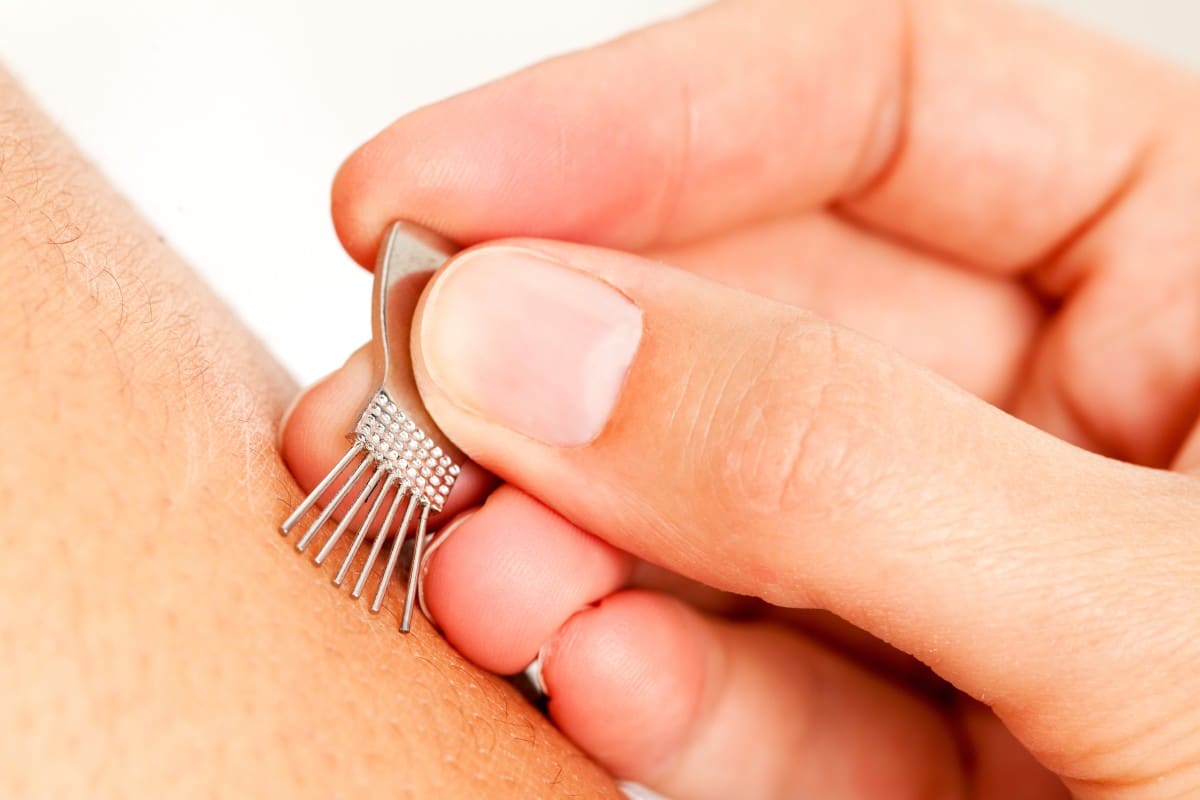
It helps to have a very wide range of tools available since some kids will like certain types of Shonishin tools and not others. For example, the tools that tap can be too stimulating and ticklish, so a pediatric patient might prefer tools that brush. It’s important to keep in mind there’s a clear power difference between the child patient and adult acupuncturist, which is why you should ensure your pediatric patients feel in control of what happens to their bodies during their visit. If a child isn’t comfortable with needles, be prepared with another plan to treat them.
Don’t Isolate Parents from Children During Treatment
When treating children, it’s important to keep the parents or guardians involved in the pediatric acupuncture treatments you’re providing. For example, if you’re treating a child under five or who is nursing, it’s important to treat the mother at the same time, if possible. Consider also treating the caregivers when treating a young child because of how inherently in tune children can be with their guardians. Unspoken emotions and energy can be transferred between parents and a child, so it’s important to keep the unit together and in communication.
Don’t Discourage Playtime
When it comes to younger patients, they might feel more comfortable sitting in their parent’s lap, especially during the initial visit, or even playing on the floor while you perform the treatment. Toys are an extremely important tool for your ability to treat kids! When they’re waiting in the waiting room, they can have these toys to play with and bring with them into the room and that creates a kind of safety. When you are treating your pediatric acupuncture patients, you can allow for distraction so that you are able to do more of what you want for the treatment.
Streamline Medical Insurance Billing for Holistic Practices with HBS!
Medical billing is especially complicated for holistic practices and can possibly overwhelm your business as you focus on growing your practice and provide care for your patients. By outsourcing your medical billing, you can leave the responsibility of insurance enrollments, credentialing, and medical billing and coding to the experts – saving you time!
As an experienced billing provider for holistic practices, Holistic Billing Services can help your practice navigate the intricacies of insurance billing claims to minimize denials, increase your revenue, and grow your practice. We understand the unique needs of holistic practices, as well as the common obstacles you face when it comes to medical billing and coding. With a knowledgeable partner by your side, you can streamline your billing and increase your revenue cycle management! To learn more about our services, talk to one of our billing and coding experts today.
There are challenges unique to being a job seeker in today’s world, but there are also challenges regarding hiring practices, especially in the holistic practice industry. How can you continue to grow your holistic practice with the best talent? What can your holistic practice do to ensure the smoothest onboarding experience for your new hire?
Find your answers to your questions surrounding hiring best practices further in this article and help your holistic practice ensure both growth and success.
Why Following Hiring Best Practices Matters for Holistic Health Care Practices?
Here at Holistic Billing Services, we understand that holistic medicine is unlike most medical specialties. This has its advantages – less local competition, more loyal patients, freedom to run your practice as you see fit – but can also come with drawbacks, like problematic payer relationships, smaller patient populations, and a smaller pool of potential employees with a background in holistic medicine or billing. 
Since it can be challenging for holistic practices to find job candidates with specialized experience, it‘s critical to hire as smartly as possible. The key is not to expect any employee to walk in with a keen understanding of the ins and outs of your holistic practice. Rather, it‘s essential to make sure you hire staff with the capacity to learn quickly and provide your holistic patients with top-of-the-line service. Here are some tips on attracting best-in-class applicants, making sure they‘re right for your holistic practice, and getting them to choose to work for you.
What Are The Best Hiring Practices?
There are many facets to the hiring process, no matter what industry you’re in! The following best practices tips will help make this process more focused, positive, and rewarding for your holistic practice.
Have an Open Mind During Recruiting
Look around your holistic practice’s office and do a mental audit of your current staff. Are you happy or unhappy with their performance? What skills are missing from your current team? Which employee‘s performance would you most like to see emulated by an incoming staffer?
Avoid making repeat mistakes – did your last two temp-agency hires prove unsuccessful? Try advertising with an online job posting site, instead. Or, if you‘re happy with the team you have, ask around for referrals; good people tend to know good people!
As you review resumes, think through your goals and the human capital on your team. Do you have a capable staff that could train a ’blank slate‘ hire without holistic healthcare experience? If so, don‘t discount recent graduates. If not, don‘t feel bad about holding out for someone with a more specific medical office background.
Plan and Align Expectations with Hiring Managers
Your holistic practice should be leveraging data to help you target the right candidates for your open positions, conducting intake meetings with hiring managers, and coming prepared to those meetings armed with data to help guide the conversation. Intake meetings are an essential foundation for the employment process; recruiters and hiring managers need to be aligned on recruiting goals and ideal candidate profiles, especially when scouting for new or unique positions. As the person or team with expert knowledge on the holistic practice industry, you should be able to speak to the number of potential candidates available in a given market, as well as insights on salary expectations or market cost of the position you’re hiring for.
Be Thorough & Honest During Callbacks and Interviews
In the interest of time, you may want to just pluck out the first few qualified candidates from your applicant pool and bring them in right away. Do your best to avoid acting on that impulse! Narrowing down your list too quickly can put you in a bind, and if the interviews go poorly, you‘ll be back to square one.
Instead, conduct five-minute phone interviews with 7-10 strong candidates, and bring the top four in for interviews. That way, you‘ll have a good idea of the candidates‘ interpersonal skills before they come into your holistic practice.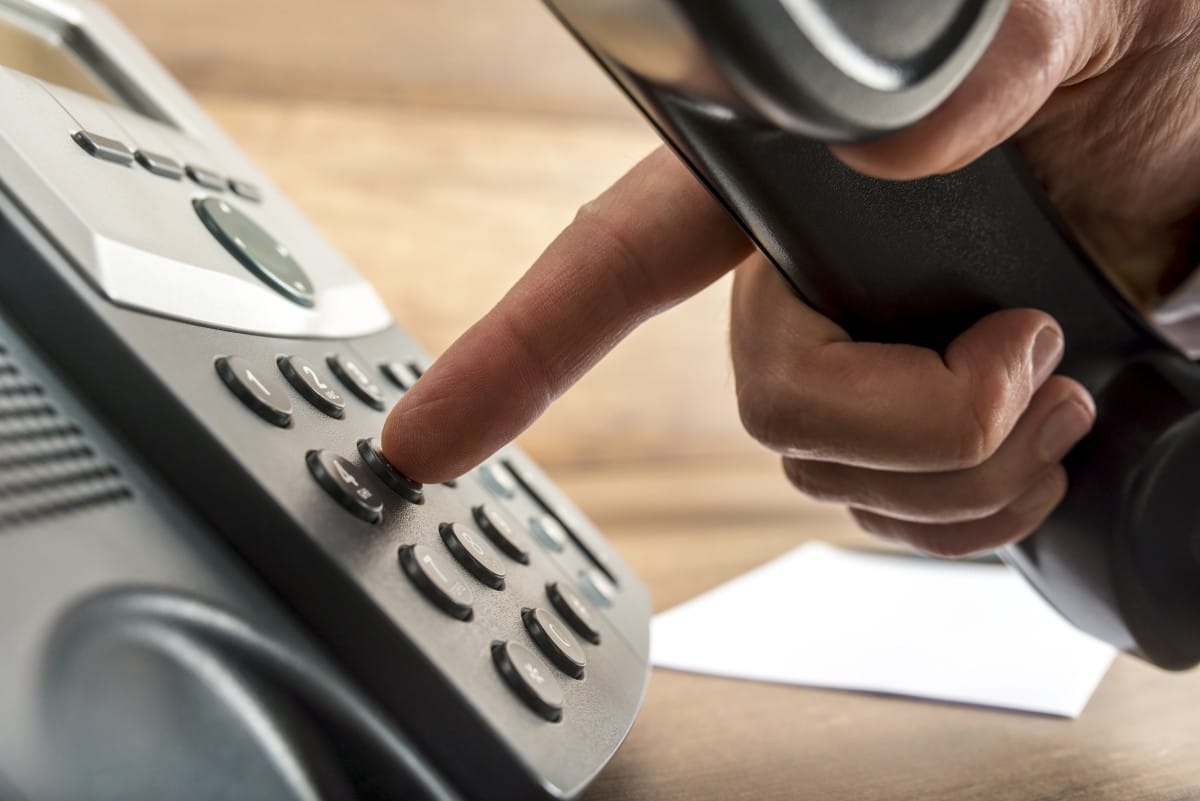
When interviewing candidates, give them an honest overview of what the job entails and how much it pays; observe how they react. Are they eager? Intimidated? Displeased? Don‘t shy away from explaining the ’tough parts‘ of the job; the hire you choose should be prepared to accept the good and bad aspects of working at your holistic practice. It behooves all parties involved to have a candid conversation about the rewards and challenges of the work!
Be Direct During Offers & Onboarding
If you have only one opening, avoid making an on-the-spot offer until you‘ve interviewed your top four candidates. Once you‘ve met them all and narrowed it down to the right person, extend the offer right away while being direct about the start date and pay. Don‘t give the offeree too much time to decide whether to accept; you don‘t want to lose your #2 prospect to another opportunity if #1 doesn‘t work out.
Then, prepare to make your new hire a well-informed employee by plotting out your training plan in advance of your new staffer‘s first day. Who will be the primary trainer? Who will cover the trainer‘s other responsibilities while he or she tends to the new hire? Try to plan a comprehensive experience for your holistic practice’s newest employee, one that includes demonstrations of daily task management like record keeping, resources pertinent to training, icebreaker questions to help them acclimate to the team, and more. These efforts will help them adapt to your holistic practice’s environment, and give them a foundation for success!
Set Your Expectations From the Start
An essential part of bringing your newest employee up to speed for your holistic practice is to clarify your expectations of them and their progress over the course of a set period of time. Make sure your new hire understands how long you expect training to take, and how soon you‘ll expect them to start working with patients and contributing to office productivity. Establishing a general timeframe for them to feel comfortable navigating your holistic practice and personal timeline for becoming more involved with their duties will help you evaluate their progress. Maintaining clear communication about such expectations, and being available to help answer questions or challenges they encounter, will help them thrive in your holistic practice’s environment. Careful planning is always the best way to ensure any new hire‘s success.
How Holistic Billing can Elevate Your Holistic Hiring Practices
Established in 1999, Holistic Billing Services is an integrative health services firm focused on streamlining your documentation, billing, and coding process to enhance your revenue cycle management. Our secure online portal provides acupuncture practices, massage therapy practices, and chiropractic practices an easier way to manage their health insurance billing so they can focus on delivering quality patient care and growing their practices through effective hiring processes!
As the nation’s largest billing provider for holistic healthcare, we service over 1,200 practices across the country. Thanks to our knowledge of insurance reimbursement and healthcare auditing risks, holistic practitioners average over $185 per hour of treatment with our billing and coding services. Contact us today and see what we can do for your holistic practice!
Over the last few years, more people than ever before are turning to acupuncture and other holistic treatments to alleviate ailments. As more people intentionally seek this service, your practice is likely to grow in size as members of your community begin to visit.
With this exciting growth in business comes the not-so-exciting amounts of medical billing paperwork – not to mention the headache of it all! Holistic Billing Services knows medical billing can be a challenge to navigate, especially for acupuncture practices. This post addresses some of the most frequently asked questions about billing for acupuncture to equip you with the fundamentals of medical billing.
What is Medical Billing?
Medical billing involves a healthcare provider submitting, following up on, and appealing claims with health insurance companies in order to receive payment for services rendered; such as testing, treatments, and procedures. It can be a long, grueling process that requires jumping through hoops left and right to receive payment for services rendered.
Why Is Medical Billing Important for Acupuncture Practices?
Though it may be a complicated process, it is also absolutely necessary for acupuncture practices because it is the most common way of getting paid for services rendered. The majority of your patients will likely have some form of insurance as payment, so your practice needs to be adept at navigating the many facets of dealing with insurance companies. This includes being knowledgeable of the appropriate medical billing codes for the treatment you provide to your patients, keeping track of the relevant patient records, and understanding how to communicate with the insurance company in order to be reimbursed.
Top Acupuncture Billing Questions and Answers
Medical billing can be a challenging portion of your acupuncture practice’s administrative needs. Let’s review some of the top acupuncture billing questions with our expert answers:
When Should I Update My Insurance Verifications and Medical Credentials?
Insurance verification is a critical component of billing insurances for acupuncture, and medical credentialing is a key part of this, too. Current verifications have the strongest correlation with successfully getting claims paid, which is obviously essential to your acupuncture practice. Patient plans and/or benefits will often change at the start of a new year, so it’s imperative you request new insurance verifications as soon as the new calendar year starts.
I am In-Network for a Couple of Insurance Companies, How Often Should I Re-Negotiate My Rates?
Managed care contracts are usually written to auto-renew on an annual basis so you will want to analyze your contracts annually. Use the end of the year to calculate your per-visit reimbursement for a given contract and compare it to per-visit reimbursements for your cash and out-of-network patients. Based on these figures, you can determine if the volume of patients seen from a particular payer offsets any variance in reimbursement. Then, negotiate accordingly.
Which Procedure Codes are Most Frequently Used by Acupuncturists?
In general, the most frequently used CPT procedure codes are those relating to medical evaluation and management, a few of which include:
- 99201-05: New Patient Office Visit
- 99211-15: Established Patient Office Visit
- 99281-85: Emergency Department Visit
- 99241-45: Office Consultation
Specifically for acupuncturists, the following are the most frequently used CPT codes:
- 97810: Initial Acupuncture Session (Tip: do not report this in conjunction with 97813; use one or the other)
- 97811: Subsequent Unit of Acupuncture (You may use it in conjunction with either 97810 or 97813)
- 97813: Initial Acupuncture with Electrical Stimulation (Don’t report this in conjunction with 97810; use one or the other)
- 97814: Subsequent Unit of Acupuncture with Electrical Stimulation (This may be used in conjunction with either 97810 or 97813)
Accurate medical billing codes are instrumental for streamlining your billing process and further growing your acupuncture practice.
Do You Have a List of Insurances That Will Pay for Acupuncture That I Can Use?
Unfortunately, we don’t have a perfect answer for this! Insurance benefits will vary from plan to plan – even within the same insurance company – so there’s no quick shortcut for knowing if the patient‘s insurance will cover acupuncture. It’s really a case-by-case basis when serving patients who might have Medicare, go through the VA, or hold a private insurance policy otherwise. HBS recommends that you verify the patient‘s benefits before you treat the patient by contacting the payer directly or confirming their insurance plan prior to each visit.
Do I Have to Implement Electronic Health Records (EHR) in My Practice?
No, although you will need to document each patient visit, there is no legal mandate to implement EHR for your acupuncture practice. The Centers for Medicare and Medicaid Services (CMS) rolled out Meaningful Use non-compliance penalties in 2015, but most acupuncture practices do not meet the minimum revenue standard for Medicare so these penalties should not apply to your practice.
Though not legally required, using electronic health records can greatly streamline your administrative tasks and help your acupuncture practice operate more efficiently.
Can I Bill Insurances for Massage Therapy?
Yes, there are insurance plans that will pay for massage therapy treatments performed by a licensed massage therapist or licensed acupuncturist! As always, be sure to verify the patient’s insurance benefits information and utilize accurate medical billing codes. The following are the most frequently used for massage therapy sessions:
- 97124: Massage Therapy
- 97140: Manual Therapy

- 97112: Neuromuscular Re-Education
- 97010: Hot/Cold Packs
- 97110: Therapeutic Exercise
Have More Questions About Acupuncture Billing? Reach Out to the Experts at HBS!
HBS is an acupuncture billing service that is experienced in billing for both licensed massage therapists and licensed acupuncturists. As an experienced billing provider for holistic practices, Holistic Billing Services can help your practice navigate the insurance billing process to minimize denials and increase revenue.
With our team of experts by your side, you can focus more on treating patients to help your practice grow rather than worrying about insurance billing. To learn more about our acupuncture or massage therapy billing services, talk to one of our billing and coding experts today.
Your patients are your business. But it’s not how many patients your holistic practice schedules that matters – it’s the profit that those patients generate that will be the difference between a successful practice and one that is closing its doors. In order to set an advertising budget, you need to understand the value of your patients, and to do that you need to understand your Customer Lifetime Value (CLV).
At Holistic Billing (HBS), we focus on billing insurance for acupuncture services allowing us to use last year’s data to analyze the CLV specifically for an acupuncture insurance patient. However, we encourage you to go through the exercise for your other types of patients as well.
Why Does Marketing Matter for Your Acupuncture Practice?
As with any business, marketing is how you attract your customers, explain your services and backstory to the community, and stay relevant to your audience. If you don’t market your holistic practice, what are the chances someone will stumble across it? Of course, word of mouth is always helpful, but that can’t be the only marketing strategy your practice utilizes.
Marketing yourself to your community as a holistic practice, detailing who you are and what your story is, and offering snippets of relevant content is a great way to get noticed and attract your best patients. Your practice can’t grow if you don’t show it off!
How Much Should Acupuncture Practices Budget for Marketing?
A good rule of thumb is to spend 5% of your gross revenue on marketing activities if you want to maintain the size of your practice. So for instance, if you collect $30,000 per month you should be spending $1500 per month on marketing.
If you’re looking to grow your practice, it’s recommended that you spend between 7% and 15% of your gross revenues on marketing depending on your goals and how aggressively you want to pursue them. It’s also understandable if your marketing budget changes a little bit over time; it should be somewhat flexible to account for the status and potential growth of your holistic practice.
What Is Customer Lifetime Value?
 Customer Lifetime Value is a prediction of the total worth of a patient to your practice. The CLV can be applied to any business, but it is particularly useful for healthcare and service sectors like your holistic practice.
Customer Lifetime Value is a prediction of the total worth of a patient to your practice. The CLV can be applied to any business, but it is particularly useful for healthcare and service sectors like your holistic practice.
The lifetime value of a customer, or customer lifetime value (CLV), represents the total amount of money a customer is expected to spend in your business, or on your products, during their lifetime. This is an essential figure to know because it helps you make decisions about how much money to invest in acquiring new customers or retaining existing ones.
In the big picture, CLV is an indicator of the profit associated with a particular customer relationship, which should guide how much you are willing to invest to maintain that relationship. For example, if you estimate one customer’s CLV to be $500, you wouldn’t spend more than that to try and keep the relationship as it wouldn’t be profitable to your holistic practice.
What Is the Lifetime Value of A Holistic Practice Patient?
No two practices are alike, thus lifetime value will vary depending on your location, the services you offer, and how long your patients stay with you. Here is how we calculate the CLV for your insurance patients:
Average Annual Value x Relationship Years + Patient Referral Value
= Customer Lifetime Value
Let’s look at the figures more closely.
First, we determine how much the average patient generates per year. For this exercise, we used acupuncture patient averages across our national claims database. This past year our clients saw their patients on average 11 times in the calendar year. The payment per visit averaged $175 for a total of $1,925 in revenue per patient. Then factor a 20% profit margin on that revenue. Therefore, the Average Annual Value of an insurance patient is $385.
Next, you will need to know the lifetime of an average acupuncture insurance patient. If you‘re not sure, use the healthcare industry average of ten years. Then, plug the number into the first part of our formula to get a patient‘s lifetime value of $3,850.
Average Annual Value ($385) x Relationship (10 Years) = $3,850
Now, this is when it gets interesting. Let’s say the average client provides referrals for two new patients during their relationship with your practice. Each additional patient is worth $3,850. So, for two patients, your Patient Referral Value is $7,700. Now, let‘s go back to the original formula:
Average Annual Value ($385) x Relationship (10 Years) +
Client Referral Value ($7,700) = Customer Lifetime Value ($11,550)
Why Does the Lifetime Value of a Customer Matter?
Once you understand the CLV for your practice you‘ll be able to make better decisions about when, where, and how much you should spend advertising on new patients. The rule of thumb is that you never want to spend more money on acquiring a new patient than your calculated Customer Lifetime Value.
Now that you are familiar with the CLV of insurance patients in acupuncture, apply the formula to your cash patients and clients using other services at your holistic practice. With this information, you can make more realistic marketing decisions that will direct you to the right type of patients and ensure your most successful practice yet.
Market Budget Basics
The first step in determining what a proper budget would be for advertising your acupuncture practice is to gather all the figures of your practice and create SMART goals:
Specific
The goal must be specific and well-defined. You and your team should be on the same page about where your holistic practice is currently at, and where you all want to see it go.
Measurable
Make sure you attach a metric to your specific goal. Of course, you want to grow your holistic practice, but by how much? Do you want to see 20 new patients over the next 6 months? Expand your practice by 20% by the end of the quarter? Calculating a number to aim for will keep you and your team on target.
Attainable
You certainly have big dreams for your holistic practice, but they won’t come to fruition overnight; your goals should be attainable for where your practice is currently. It wouldn’t be realistic to aim for 100 new clients in a week, but you could change that perspective and aim for 100 new patients in one year.
Results-focused
Ensure that your marketing budget is focused on the results that matter to you and your overall mission for your practice. Achieving a goal should be rewarding to you and your team, personally and professionally.
Time-dependent
This ties into every other facet of your SMART goals; tailor your marketing goals to a particular time frame to hold yourself accountable. This will once again affirm your holistic practice’s goals for yourself and your team, and keep everyone in alignment.
HBS recommends setting goals for patient visits, new patients, and collections, as a strategic starting point for your holistic practice. From there, you and your team should develop a month-by-month, week-by-week, and day-by-day marketing plan focused on achieving your goals.
Once you layout the marketing activities that you will be participating in both internally and externally, you can then begin to develop a budget to fund those activities.
Best Practices for Acupuncture Marketing
Now that we’ve discussed the importance and foundational basics of marketing, let’s dive into the best practices for holistic marketing:
Network with the Health Practitioners in Your Area
Whether you are an experienced practitioner or new to the industry, a sure-fire way to get solid client referrals is through the doctors, naturopathic doctors, chiropractors, physiotherapists, and other holistic practitioners in your area. These professionals work with patients who might desire a holistic approach to take care of their health, in addition to medical services. Patients who are referred to you in this manner have a high probability of following through and becoming long-term, paying clients.
Encourage Word of Mouth
Good old word of mouth is one of the best forms of flattery for any business, but especially a holistic practice. This method of marketing is one that potential clients trust the most, but few businesses have mastere d it. It’s alright to ask for referrals or testimonials from your existing clients, colleagues, friends, and family.
d it. It’s alright to ask for referrals or testimonials from your existing clients, colleagues, friends, and family.
Social media and other internet review sites are also excellent ways to encourage your patients to talk about you. Providing meaningful content and engaging with your followers can spread like wildfire and attract the right opportunities for your business.
Make Yourself as “Findable” as Possible
If they can’t find you, they won’t know you even exist! Creating an online presence via a professional website and social media profiles will demonstrate to your future patients that you want to create a consistent and welcoming impression. Potential clients will likely do some research before they put their trust in you. If they can’t look you up to research your credentials and experience, they may move on to another holistic practice with a stronger web presence.
Host or Participate in a Contest
Everyone loves to win free stuff! Whether you do an online contest or offer a drawing at an event, putting together a contest is an excellent way to collect the names of potential clients and grow your email list. You can offer a special prize or free services to the lucky winner and, hopefully, you just got yourself some great leads in the process. It’s a win-win.
With these steps and essential basics of marketing, we’re sure your holistic practice will take off! Holistic Billing Services is here to help you grow your practice in a variety of ways and has been facilitating the growth of holistic practices since 1999. Contact us today and let us help your holistic practice reach its potential!
As a medical billing company focused on holistic practices, our team of experts often speaks to hundreds of practitioners daily. Many of the questions medical practices have been around handling patient deductibles. At the beginning of every year, most patients have their health insurance benefits recalculated. That is to say, that the number of visits and deductible amounts are re-set on January 1.
So a frequently asked question through our provider hotline is, “How do I handle a patient‘s deductible?” Follow some of these tips to better manage patient deductibles so you can be paid on time for treatments.
What are Insurance Deductibles?

Insurance deductibles refer to the amount patients have to pay out-of-pocket before their insurance benefits will subsidize payment; the amount is identified when verifying insurance benefits. A patient’s deductible is determined by their insurance plan and will range in amount, so you will not know the exact balance until you verify the insurance benefits. Every insurer and plan varies when it comes to benefits, coinsurance, associated copays, and deductibles.
As a holistic billing company, we focus on integrative health and billing insurance for holistic providers, but we are often asked by our clients for recommendations on how to promote their practice. In our experience, your acupuncture practice can gain new customers and strengthen your current client base with the right marketing.
Learn more about how your holistic practice can develop the most effective acupuncture marketing strategy for overall enhanced revenue cycle management!
Why Marketing Your Acupuncture Process Helps You Stay Competitive and Drive Additional Income

The importance of successfully marketing your acupuncture practice cannot be understated. Even if you have some of the best delivery of care to your patients, your new patient acquisition will be low if you can’t get your name out there! With the right marketing strategy, your acupuncture practice can stay competitive and continually bring in new clients—which means more revenue.
Staying competitive is crucial to driving additional income in an increasingly saturated holistic market. More people than ever before are turning to holistic medicine to maintain and restore their health. The global complementary and alternative medicine market is predicted to have an over 22% growth rate from 2021 to 2028 – eventually reaching over $ 400 billion by 2028. As more and more people turn to holistic medicine, your acupuncture practice must adopt competitive marketing techniques to stand out from the crowd.
Developing a marketing strategy for your holistic practice starts at the basics: delivering the right message. Since more people are turning to holistic medicine to alleviate their back pain and other ailments, cultivating your unique treatment approach that is both authentic to your practice and helps answer the questions clients are looking for will also gain you not only new patient acquisition, but committed clients who keep returning for more.
Acupuncture Marketing Best Practices
In such a growing market saturated with competitors, it may seem difficult to stand out from the crowd. By adopting these best practices, your acupuncture practice can better market to new patients as well as maintain existing relationships with your current client base.
Develop Your Brand
Part of what will set your acupuncture practice apart from the competition is developing your acupuncture clinic’s unique brand. This includes your message style and overall mission statement. You’ll have to address what kind of approach you’ll take to market your practice to the public and what tools you’ll use.
All of this will influence your message tone. For instance, if you’re marketing acupuncture to the elderly, you will use a different tone, style, and content than if you were attracting a millennial client base. Or, let’s say you’re focusing on delivering acupuncture services as an opioid alternative for patients recovering from addiction or surgery. You would use a much different tone of voice in your marketing that speaks to their specific needs than if you were trying to attract a more generic audience.
Grow Your Online Presence
In today’s digital age, building an online presence for your acupuncture practice is a must. This includes an optimized acupuncture website so your business can be easily accessible to those online. A successful website is one where you have the basics, such as your location, contact information, and a bit about who you are and your practice. However, you can add increased value to your website by including what makes your acupuncture practice unique – such as your treatment philosophy, team bios, and FAQs about acupuncture itself.
You also have to make your holistic practice easy to find online as well. Claim your Google business profile so local customers can help locate you in the “acupuncture practice near me” search results. Consider also adding your practice to review sites, such as Google Reviews and Yelp, for customer feedback. Since prospective patients like reading online customer reviews, these can be valuable platforms to highlight your holistic practice.
Utilize A Wide Variety of Digital Marketing Tools
Mastering omnichannel acupuncture marketing is key to reaching a variety of audiences. There are so many options out there now for reaching new customers that you don’t want to just stick to one digital marketing tool!
What digital channels you choose to market on should reflect on the audience you’re trying to reach, as well as the voice of your practice. Some digital marketing tools for your acupuncture practice can include:
- Social media marketing, including using Facebook, Instagram, Twitter, and LinkedIn.
- Content marketing, such as providing useful content like blogging on your website.
- Email marketing to stay in touch with established patients.
Regardless of what digital marketing channels you use, or how many of them, the messaging on all platforms should remain consistent. This helps deliver the authentic image and message you want about your acupuncture practice to potential new clients and established ones.
How to Create a Google AdWords Campaign to Drive New Patient Acquisition in Less Than One Hour!

A Google AdWords campaign is by far the fastest and most cost-effective way to get your site to appear at the top of Google search results. Google‘s AdWords is a pay-per-click system where you pay only when a prospective patient clicks on your ad. When rolled out effectively, Google AdWords campaigns are a great way to drive new patients to your website, and ultimately help you generate more new patients.
By following these six easy steps, you can have a killer Google AdWords campaign for your practice in less than one hour!
Step 1: Set Up a Google AdWords Account
Go to www.google.com/adwords. Setting up your account can be completed in a few minutes.
Step 2: Create Your Campaign
Once you have set up and logged in to your account, you will want to create a new advertising campaign. Campaigns should be organized by the various services you want to advertise (such as chronic pain, cupping, and manual therapy). You will later create “Ad Groups” under each campaign to target specific services.
- Set the campaign name. If you want to promote “accepting insurance,” set your campaign name accordingly. Tying your campaign name to services you want to market will keep you organized and help you identify appropriate keywords and ad groups.
- Specify a geographical location for your ads to appear in. By clicking the “Let me choose” option, you can specify the city, region, or zip code so your ads only appear to your targeted audience. Limit your locations to keep your budget manageable.
- Set your daily budget. Depending on the keywords you choose, a single click can range from 20 cents to $14 or more and will vary by location. To determine your daily budget, decide how much you are willing to spend on a campaign each month and divide it by the number of days in the month.
Step 3: Create Ad Groups
Ad groups are a collection of ads under a campaign that corresponds to a group of related keywords. Creating ad groups enables you to further segment your campaign to focus on specific products or services you want to promote.
Step 4 Generate Ad Text
After you create ad groups, you will need to set the headlines, descriptions, and URLs.
- Headline (25 characters): Write a brief statement that includes the related keywords. For example, a good headline might read “Acupuncturist Accepting Insurance.”
- Description: Next, create a two-lined description (35 characters or less) that emphasizes the benefits of your practice and includes a clear “call to action” to encourage potential patients to click, call, or contact your practice.
- Add URLs: You will add your display URL (your web address) and the destination URL (the page a patient will be sent to after clicking your ad). The destination URL should lead to a page on your website that describes your services to help prospects quickly access information on the topic for which they searched. An example could be:
Headline: Acupuncturist Accepting Insurance
Description Line 1: Acupuncture treatments for back pain.
Description Line 2: Call for your free consultation!
Display URL: http://www.acupractice.com
Destination URL: http://www.acupractice.com/services
Step 5: Choose Relevant Keywords
Choose keywords that relate to your ad group title. When brainstorming keywords, make sure you use terms and phrases that people might search for on Google to find your practice. We recommend you use the AdWords keyword tool to help you build your keyword list.
Step 6: Add Corresponding Text into Your Website
If you are advertising a special offer or particular treatment, make sure your ad links to a page on your website that displays this information to help prospective patients immediately find what they are seeking. Edit your webpage to include your keywords, the title of your ad group, and the title of your campaign.
Remember, Google is the search engine for 87% of all web queries. By creating an effective Google AdWords campaign, you can drive immediate visitors to your website and convert these online search users into new patients.
Drive Revenue to Your Acupuncture Practice With HBS!
At Holistic Billing Services, we deal exclusively with holistic healthcare practices providing acupuncture, massage therapy, and chiropractic treatments. Whether you have questions on acupuncture insurance billing or other methods to enhance your revenue cycle management, feel free to contact our team today and let us know how we can help your acupuncture practice.
Medical billing and coding is a complicated, but necessary, process for both medical and holistic practices looking to be reimbursed for services. However, the world of medical billing processes can become rather complicated very quickly, with people throwing around a lot of technical terms that holistic practices may not be accustomed to hearing or dealing with. If your acupuncture practice plans on accepting insurance, you will need to become familiar with this terminology to maximize your insurance reimbursements and minimize denied claims.
You will frequently hear the following common acupuncture billing terms when dealing with insurance claims or working with an experienced acupuncture billing company like Holistic Billing Services. To ensure a streamlined acupuncture billing experience, keep this list handy in case you ever need to quickly reference unfamiliar acupuncture billing terms!
What is Acupuncture Billing?

Medical billing is the process of healthcare providers submitting claims with insurance companies in order to be reimbursed for their services. This can include anything from treatments, procedures, and testing. The medical billing process is essential for most practices to receive payments.
Acupuncture billing practices are not the same as traditional medical billing and have a different set of requirements. Before billing can be initiated, many holistic practices must first be credentialed with health insurance companies. On top of your holistic practice’s insurance enrollments, the right billing, coding, and SOAP documentation must be used.
Acupuncture billing uses its own unique set of codes. Since acupuncture services are always coded in 15-minute increments, you will use one code for the initial 15 minutes of service and then a separate code for additional units of time. Acupuncture CPT codes will only vary if you include electronic stimulation in your treatment.
There are numerous errors that can cause your insurance claims to be denied or delayed, resulting in your holistic practice not being paid on time for your services. A successful acupuncture practice is one with accurate acupuncture insurance billing, but how can you stay on top of it?
As an acupuncture billing company, our team at Holistic Billing understands that translating Eastern medicine techniques into Western medicine CPT codes can seem daunting. Even the most experienced acupuncturists get their procedure coding mixed up. But if you want to avoid insurance company denials, you need to use proper acupuncture CPT codes. Here are some helpful tips to avoid claim delays and denials so your practice can be paid for your acupuncture treatments.
How Providers Bill Insurance for Acupuncture

Current Procedure Terminology, or CPT codes, are used by insurance providers to document most medical procedures performed by healthcare providers, whether traditional or holistic.
These CPT codes characterize the type of procedure being done so healthcare providers can bill insurance companies for the right services and receive reimbursements.
Although holistic practices also use CPT codes to receive payments from insurance providers, they have their own unique codes and requirements which can make the process prone to errors. Understanding when to use the right acupuncture insurance billing codes is crucial to ensure a streamlined reimbursement process and receive timely payments for acupuncture treatments.
When mistakes are made during the billing process, whether due to inaccurate patient information or coding, the insurance company can deny the claim. This can delay the amount of time your holistic practice is paid by weeks – if not longer.
In the world of billing insurance, insurers improperly issue medical necessity denial claims on the basis of treatments being not medically necessary quite frequently. This is especially true in cases where you are billing insurance for acupuncture, medical massage, or chiropractic treatments. Sometimes such denials are a mistake, but all too often, these denials by insurers are intentional and intended to avoid coverage for treatments.
Since these persistent denials exist, it is important for you to understand how to fight a medical necessity denial in order for your patient to receive all of the coverage they are entitled to. Learn more about how to appeal a medical necessity denial claim and the medical appeal letter template you should use for your best chances of revoking the denial.
Is Acupuncture Covered by Insurance?

Healthcare coverage for integrative medicine treatments like acupuncture and massage therapy has come a long way in the United States. Nowadays, it is common practice to complement traditional health care with other modalities like massage and acupuncture. However, not all health insurance plans cover these services, and those that do vary when and what they cover. On top of this, the insurance industry makes the billing process for acupuncture and other holistic treatments difficult and complicated. While some insurance plans will allow these sorts of treatments for a wide variety of medical conditions, others will have more limited plans.
Medicare has special requirements for acupuncture; recently in January 2020, the Centers for Medicare and Medicaid Services (CMS) announced their decision to cover acupuncture for chronic low back pain. Although the update was especially important, as it marks the first time acupuncture codes can be reimbursed by Medicare, the additional requirements made it impossible for most licensed acupuncturists to take advantage of it.
Unfortunately for holistic practitioners, the insurance industry makes billing for acupuncture and massage complicated with a variety of accompanying regulations and requirements. The majority of covered acupuncture services that need to be billed to insurance fall under four essential acupuncture CPT codes and two medical massage codes. Like other similar therapy-based practices, integrative health practitioners bill their services according to Current Procedural Terminology (CPT) codes. Each code is considered a billable unit used to track what treatments have been administered.
Acupuncture and massage services are always billed in 15-minute increments. For instance, in acupuncture, you will use one code for the initial 15 minutes of service and then a separate code for additional units of time. If you include electronic stimulation in your treatment, your codes will vary as well.
Evaluation and management services, or office visits, may be billed by acupuncture physicians on the initial patient evaluation and periodic follow-up evaluations, typically every 30 days or every sixth visit. However, it is not appropriate to bill these codes every time the patient receives acupuncture treatments, as acupuncture CPT codes 97810, 97813, 97811, and 97814 all include evaluation and management done as part of the overall daily treatment.
Are Chiropractic Treatments Covered by Insurance?

Just as with acupuncture, chiropractic treatments used to be rarely covered by insurance. This has since changed; most health insurance plans now cover chiropractic treatments due to the holistic practice’s positive reputation among many Americans for effective treatments for neck and back pain. In fact, chiropractors see an estimated 35 million people every year in the United States alone. Despite its popularity, insurance may only pay a certain amount of chiropractic treatments or under certain circumstances just as with other holistic disciplines.
Medicare will cover chiropractic manipulation of the spine for back pain management, but there are additional caveats just as with acupuncture Medicare coverage. To qualify for Medicare reimbursement, the patient must have active back pain and seek out chiropractic care that corrects this problem. Any chiropractic services administered as maintenance or preventative will not be covered, as well as any massage therapy or X-rays.
More than 10 million acupuncture treatments are administered annually in the United States – and the number continues to grow! Its rise in popularity has made it one of the most utilized forms of integrative-medicine in the country. The advantages of acupuncture extend from acute pain relief to a safe and effective alternative to opioid medications.
As more scientific studies are proving the efficacy of acupuncture treatments, it’s no doubt that this holistic therapy will continue to expand and become an even more accepted medical method for pain management.
What is Acupuncture?

A key feature of traditional Chinese medicine, acupuncture treatment involves the insertion of very thin needles through a patient’s skin at strategic points along the body, in various depths. Due to their small size, the needles do not bring any discomfort but can provide relief by interrupting pain signals throughout the body.
While acupuncture has been traditionally used to treat discomfort from a wide variety of diseases and conditions, it is increasingly used as a remedy for stress management and overall wellness.




